Blissful neutral bedroom ideas for a super serene space
Using neutral bedroom ideas is the perfect way to ensure your sleeping spaces are calm and restful. Our round-up of inspiration features plenty of beautiful examples as well as tips on bringing neutral schemes to life
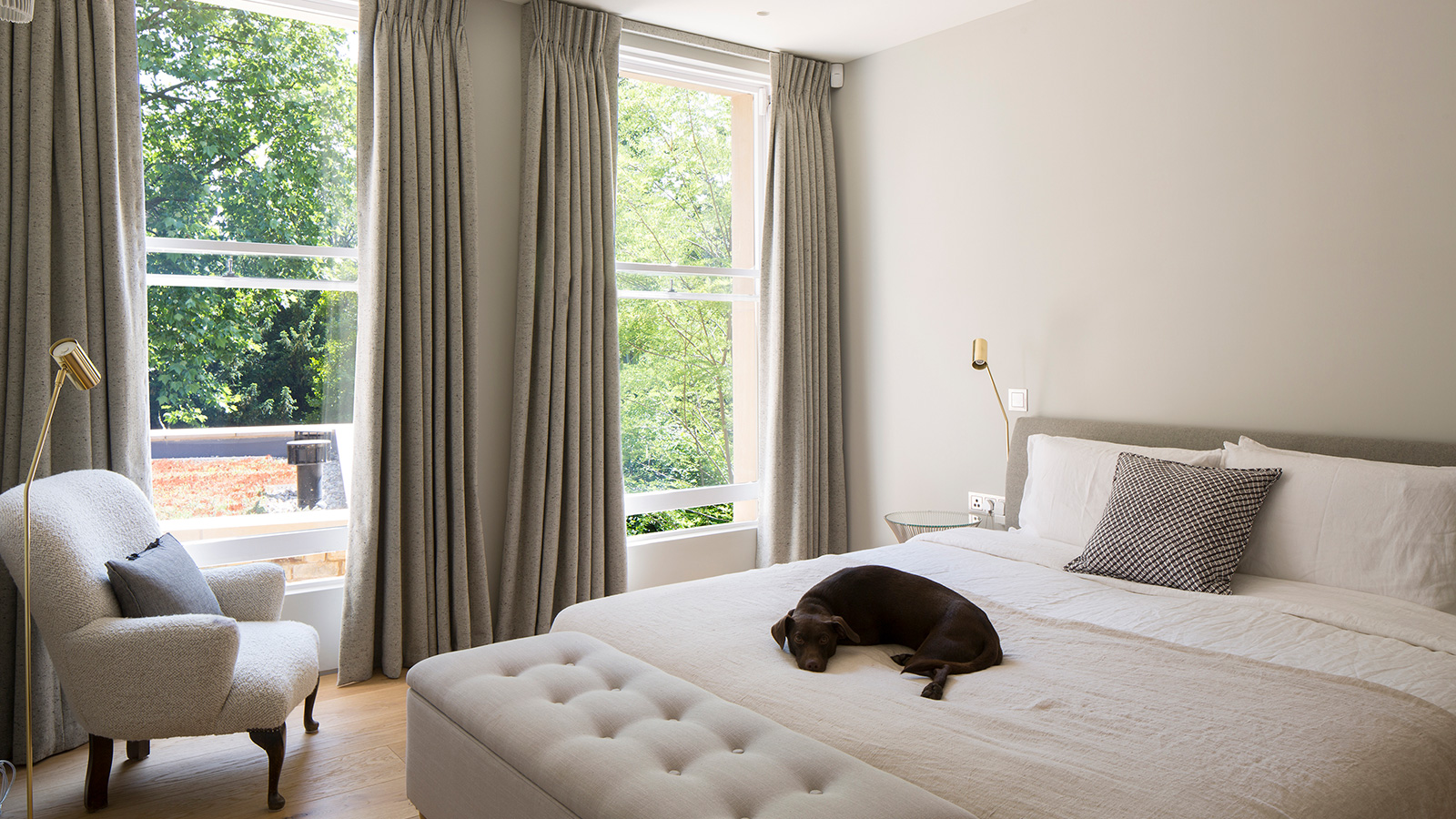
If you want a calming, restful sleeping space then neutral bedroom ideas should really appeal to you. Easy to live with and perfect for combining with all kinds of other shades and textures, neutrals are unlikely to date and come in a massive variety of hues.
While the approach you take towards your bedroom design should be a reflection of your individual tastes, whether it is master bedroom ideas or guest rooms you are decorating, neutrals are often one of the best choices.
We've taken the most beautiful schemes we've seen and brought them all together for this collection of ideas – plus we've included inspiration for how to use neutrals in ways other than on the walls.
What colours can be used for neutral bedroom ideas?
It is all well and good talking about neutral bedroom ideas, but what exactly are neutral colours?
Neutrals tend to be muted hues that actually have elemental shades within them that adapt under different light conditions. Good examples of neutral colours include white, grey, cream, beige and taupes — which in themselves are all available in a multitude of variations. They work well in all kinds of space, from smart guest bedroom ideas to living rooms.
"Neutral colours offer a great foundation for bedroom décor, providing a canvas for a range of styles," says Chelsea Clark, head of brand at I Love Wallpaper. "A versatile and timeless colour palette, neutral colours tend to be warmer compared to a stark white, making them an ideal choice when looking to create a calming atmosphere, or a haven intended for relaxation."
1. Incorporate warmer neutrals for a cosy feel
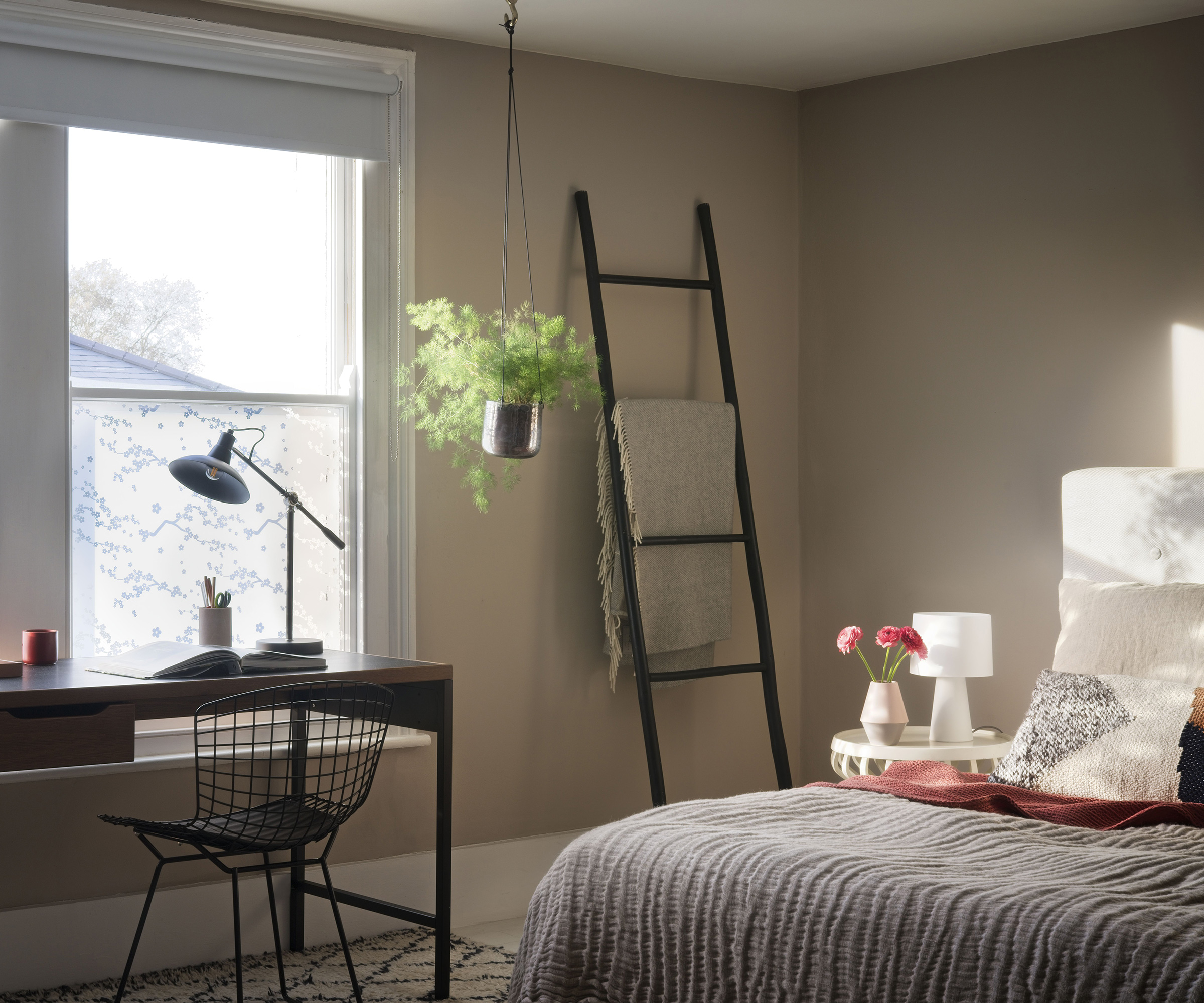
Many people are still under the impression that neutral colours can be a little bland or even leave spaces feeling cold and unwelcoming – but nothing could be further from the truth. Neutrals with all kinds of underlying colours meaning it is easy to select shades that feel warm and welcoming at the same time as peaceful and fresh.
Bring your dream home to life with expert advice, how to guides and design inspiration. Sign up for our newsletter and get two free tickets to a Homebuilding & Renovating Show near you.
“Bedrooms are the room you want to feel most relaxed in, so opting for neutral colours that will provide a tranquil environment is a good idea," says Emma Bestley, co-founder of YesColours. "But instead of drenching the entire room in generic neutral tones, consider warmer neutrals such as those with tones of peach and pink for a feeling of uplift and serenity.
Interestingly, not all neutrals have to be pale either.
"Alternatively, opt for darker shades of dusky pinks, terracotta or warmer greens to create a more restorative and comforting feel."
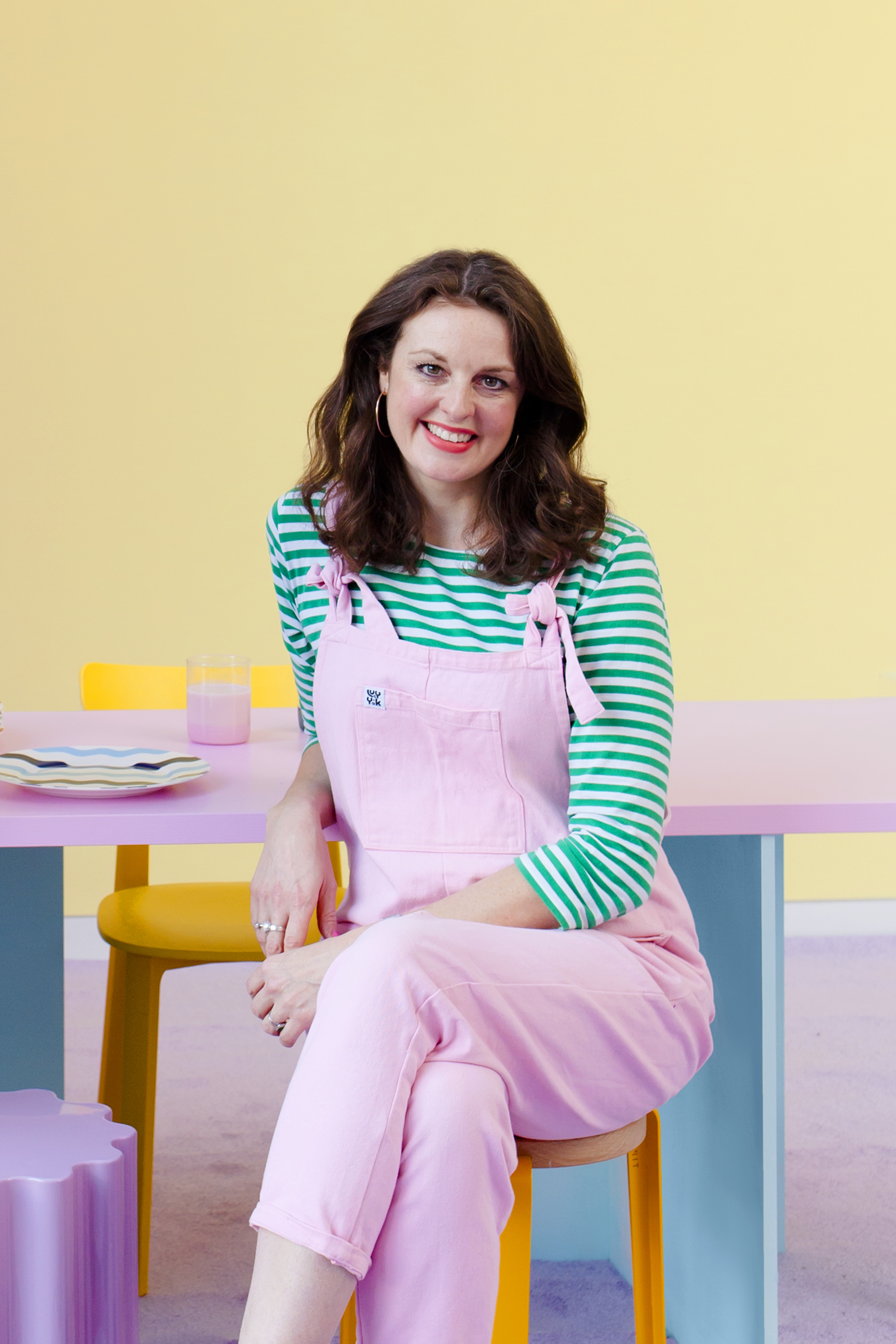
Emma Bestley, co-founder and creative partner at YesColours is obsessed with colour and design. She is also one of the lucky few to have Grapheme Colour Synesthesia – meaning her brain merges her senses so she always sees colour and emotions in words, numbers, and even days of the week. Alongside her artistic talents as a painter, Emma has worked in museums, fashion buying and events within the media industry, including one of the world's most recognised advertising agencies.
2. Give the 'fifth wall' thought too

All too often not enough thought is put into the treatment of painted ceiling ideas, yet the effect this can have on the look and feel of a room is huge.
"The ceiling is often forgotten when planning an interior design scheme and it is assumed that it will simply be painted white," explains Emma Bestley. "A good way of incorporating the ceiling into your design is to consider it as the fifth wall – this will allow you to extend your colour palette and experiment with different shades.”
In this beautiful bedroom, the walls have been painted a mushroom shade of brown, while the ceiling is a bright white meaning it stands out as a feature thanks to the contrast between the two.
3. Brighten up bedrooms with red-based neutrals
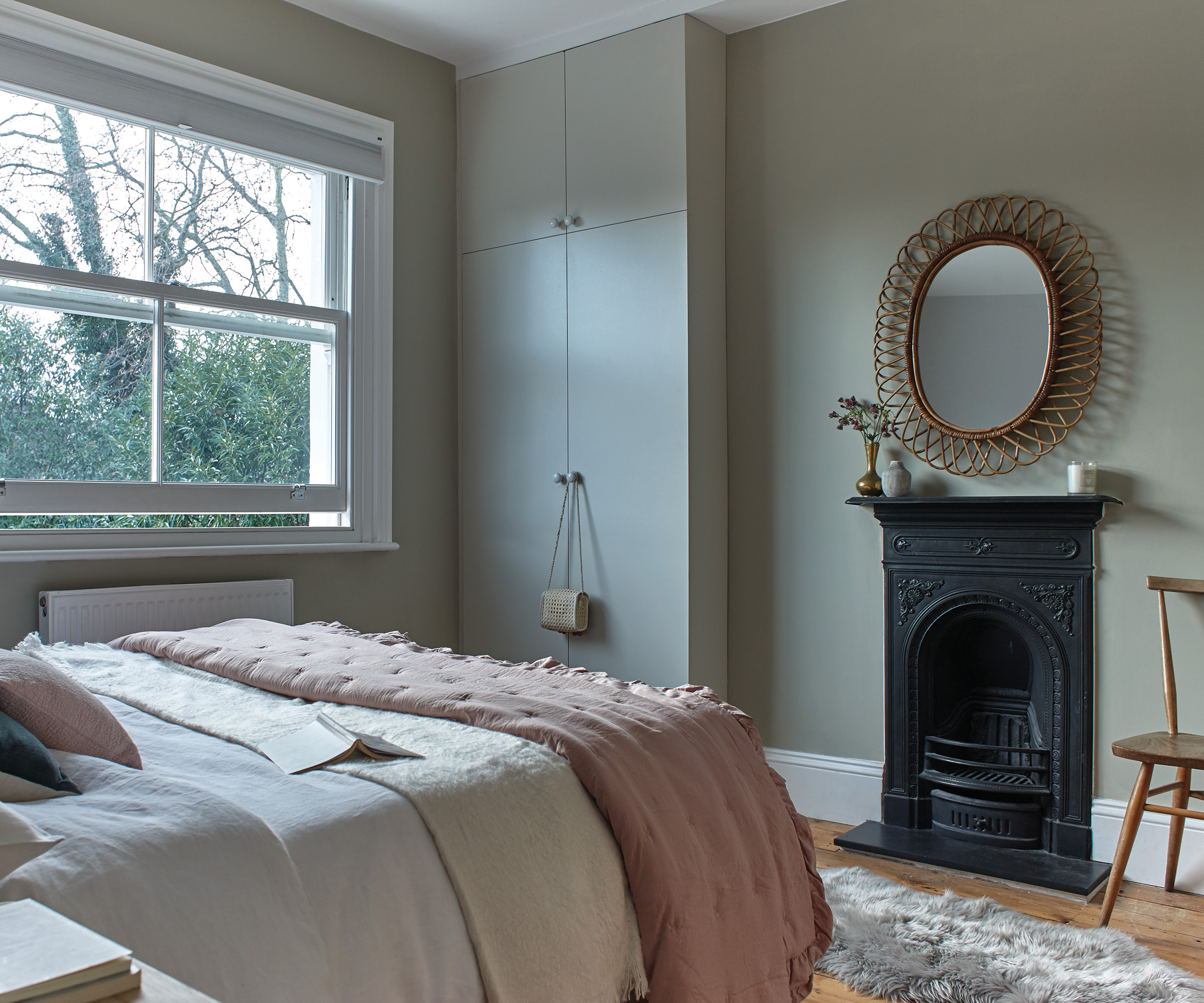
In north-facing rooms or those that don't get much natural light, the neutrals you use need to help visually warm the space up – so choose with care and do give some extra thought to your bedroom lighting ideas too.
"The neutral family is vast, from the softest brown based greys for a softer, minimalistic approach to decorating to warmer, red-based neutrals which will add some gentle warmth and be perfect for bedrooms that receive low levels of natural light," says Patrick O'Donnell, international brand ambassador for Farrow & Ball.
4. Include the flooring in your colour scheme
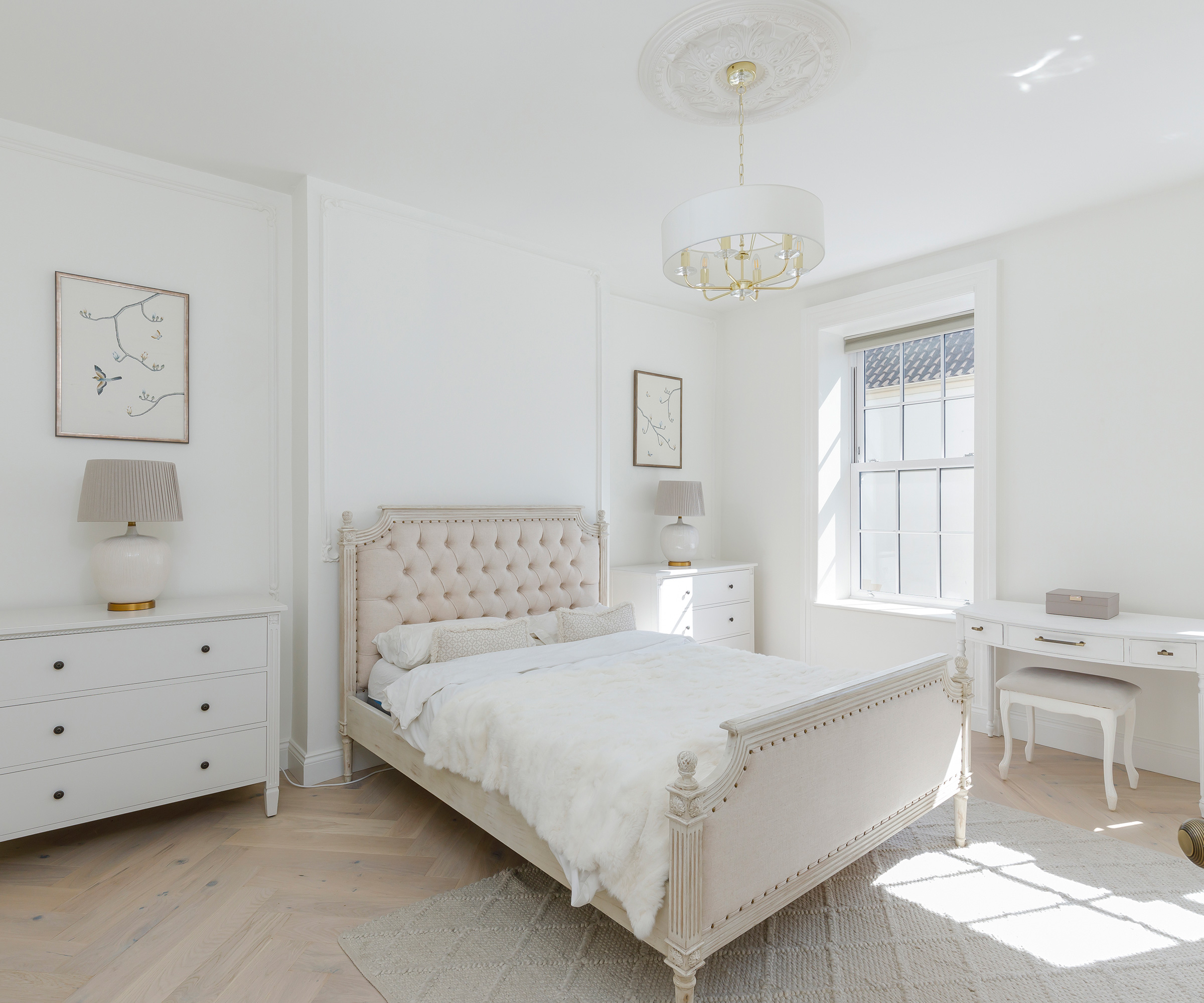
When developing the decorating scheme for your bedroom, do remember that it isn't just the walls that will add background colour – your choice of bedroom flooring ideas will play a large role too. Although many people opt for carpet in the bedroom, wood makes a fantastic floor covering too.
“As wood is naturally warm underfoot, it makes a great alternative to carpet in a bedroom as it’s easier to clean and less prone to stains," says Anthony Scott, global product and innovation director at Havwoods. "In general, lighter-coloured floors will require more upkeep than darker or more varied colours in rooms with high foot traffic, so lighter wood flooring works well in a bedroom as they require less maintenance compared to a kitchen or living room for example. In addition, wood flooring gives adaptability and longevity to a bedroom scheme, pairing with almost any interior design style, and is a great way to transition seamlessly from one room into the next – without interruption from door bars and floor strips.”
The pale herringbone flooring here, from Havwoods, is the perfect neutral pairing with the fresh, airy décor.
5. Create calm with restful greys
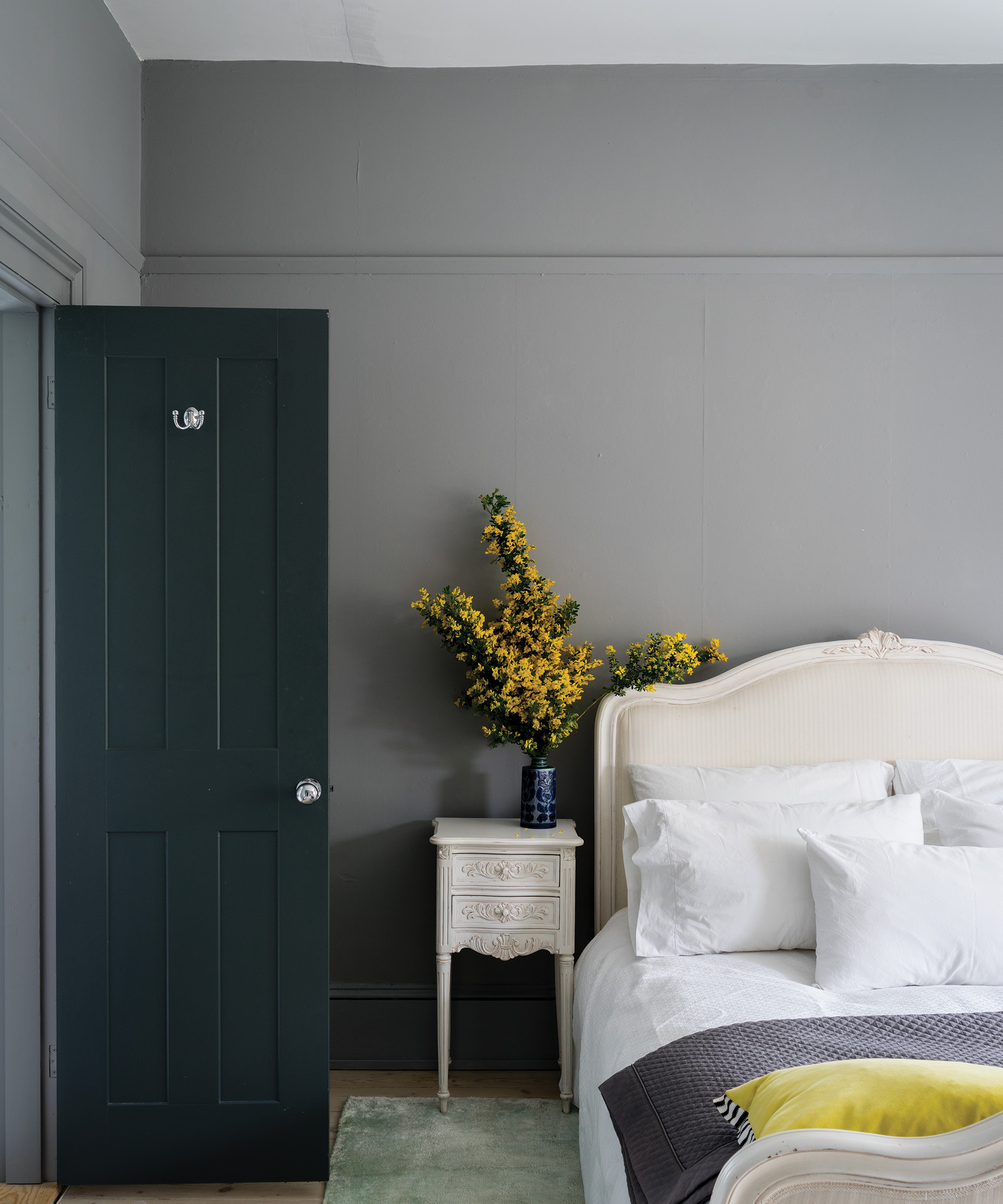
Grey is such a versatile shade and is available in many variations, all of which help with a feeling of calm and restfulness. Deep stormy greys feel cocooning and warm, while paler, breezier greys can help spaces feel lighter and more airy. Grey is a shade that is just as suitable for kitchen wall colour ideas as it is for bedrooms.
This bedroom has been painted using Plummett from Farrow & Ball, a shade that gets stronger in colour the smaller the space and has a modern feel.
6. Achieve rustic warmth with texture
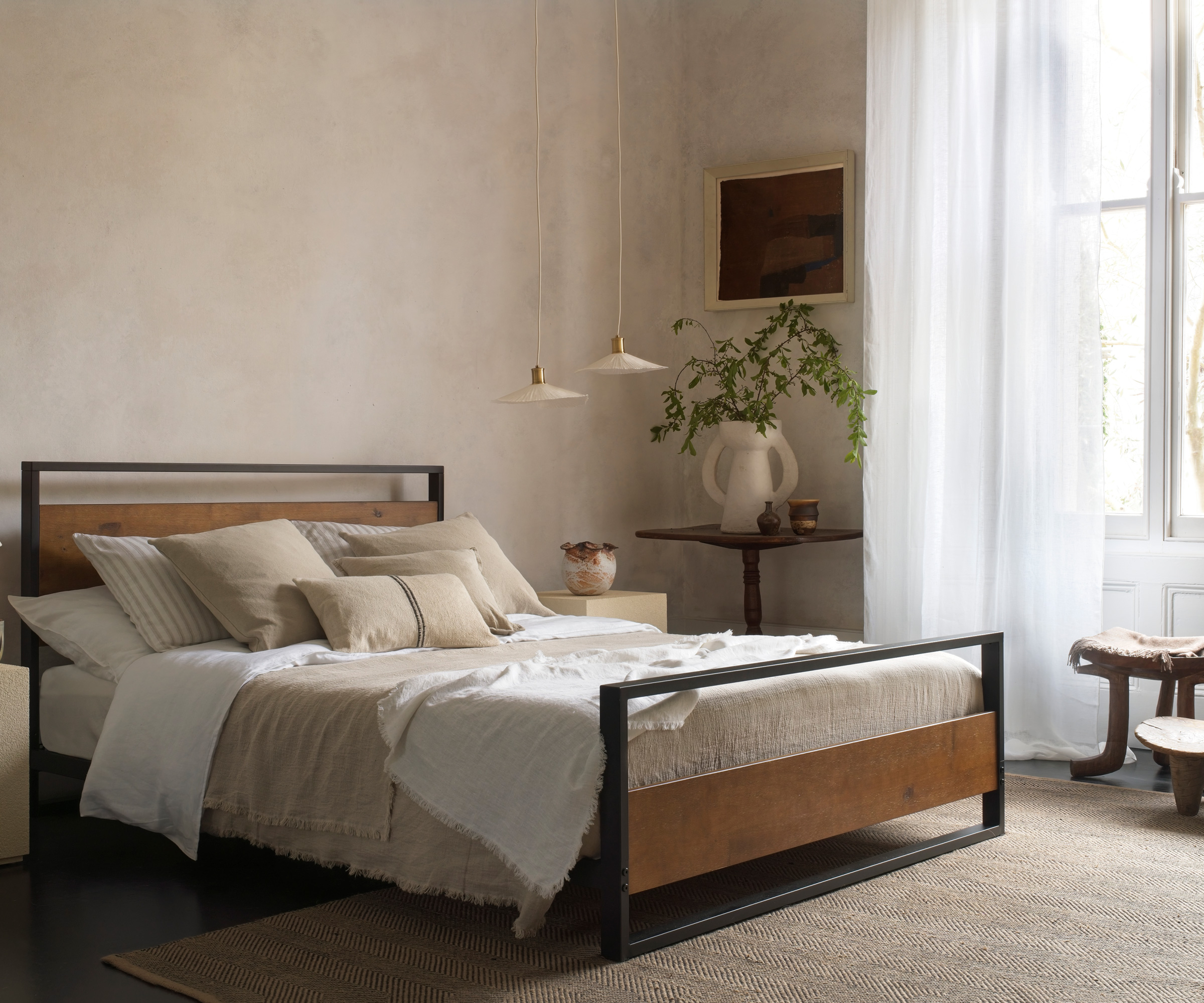
For a relaxed, laid back look, aim to include plenty of texture within your bedroom decor ideas. As well as textured paint finishes, such as in this bedroom by YesColours, incorporate plenty of different materials.
In this gorgeously rustic room, timber and metal combine with floaty fabrics and more earthy linens — the natural fibre rug adds another element.
7. Wake feeling uplifted surrounded by pink
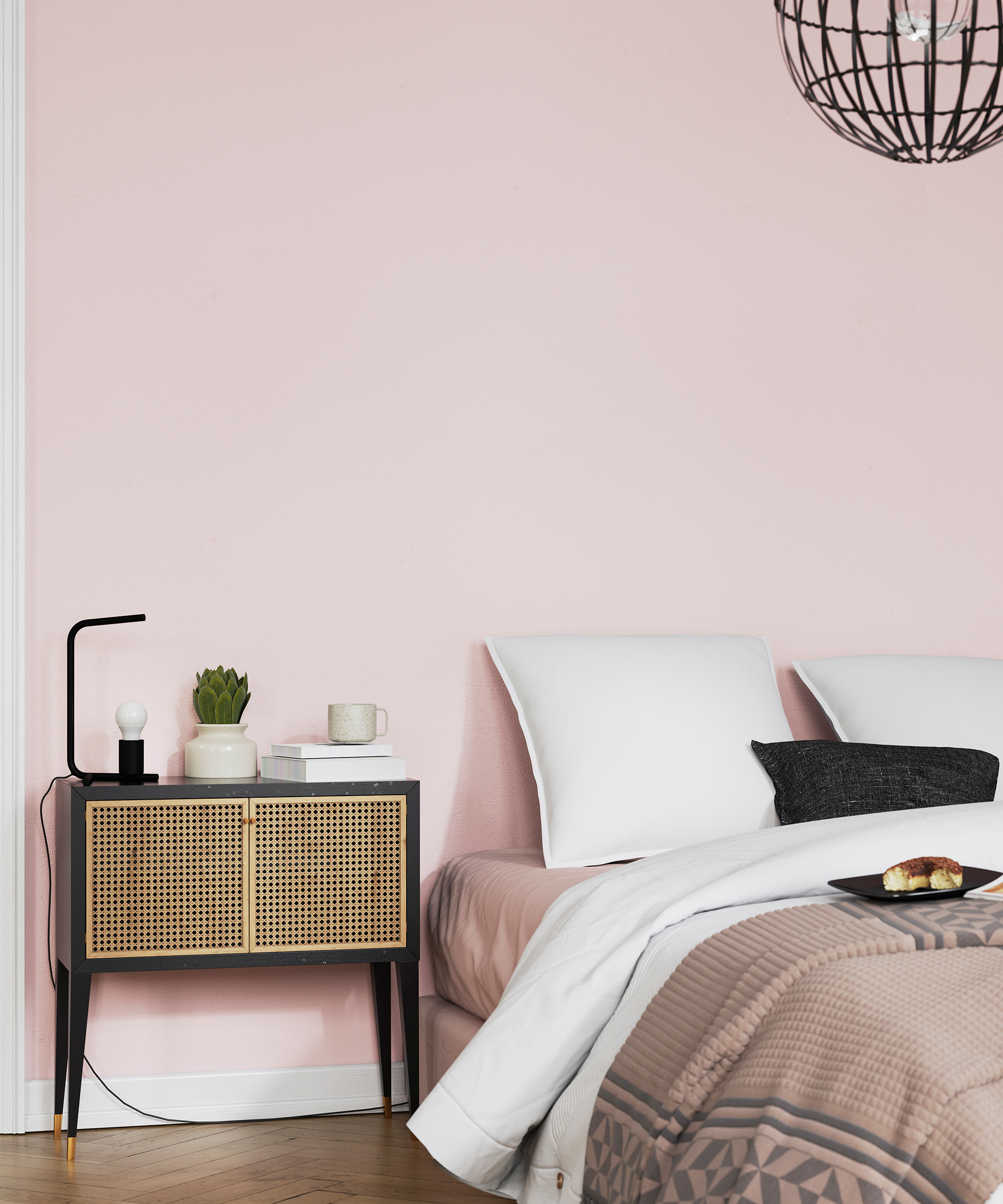
Pink can be a wonderfully calming shade to be surrounded by when the right hue is chosen. Avoid hot pinks and opt instead for soft, creamy pinks with an underlying grey.
There is no need to go for an overall pink either – this is a shade that looks great combined with other neutrals and works really well in children's bedroom ideas too.
"Neutral colours in the bedroom are always a good choice, as you want the room to feel calming and like a sanctuary that allows you to mentally unwind," says Francesca Wezel, owner of Francesca’s Paints. "Neutrals are a great option for those who get overstimulated by bright colour, and subtle grey or off-white walls can add depth and a cosy quality. Also, a muted green or pink can be a fabulous alternative to a neutral. They are still light, subtle and very tranquil, but give additional interest and personality to the room.”
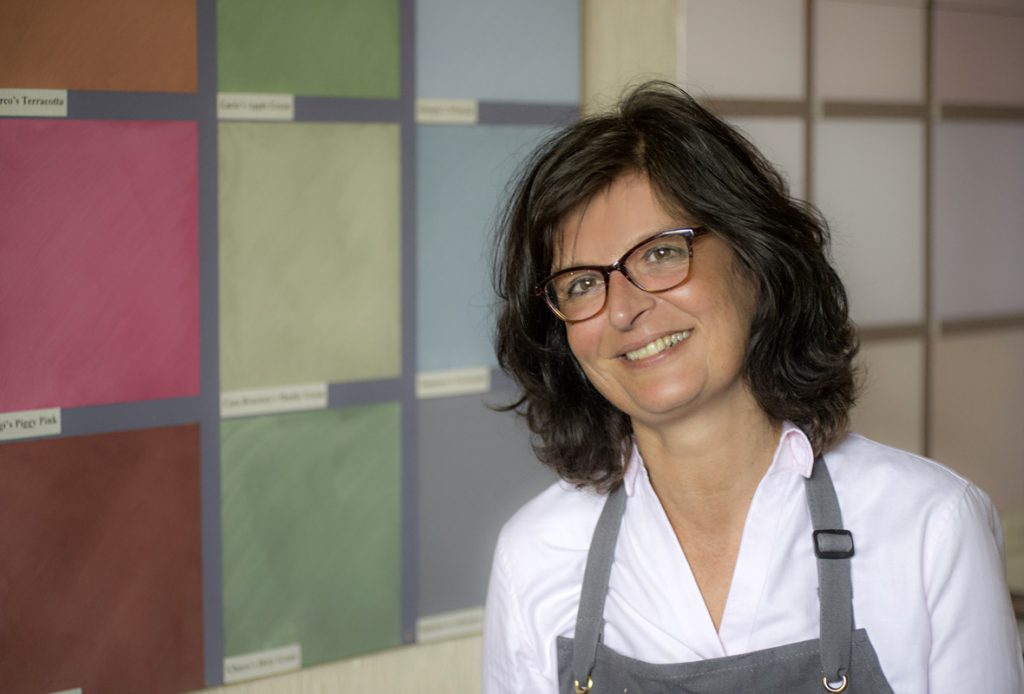
Francesca Wezel, owner of Francesca's Paints discovered her talent for making and combining colours and textures and colour matching when working for Porter’s Paints, the only manufacturer of traditional paint finishes in Australia.
Since discovering her passion, Francesca has travelled the world looking for colours, their origins and their use. Francesca’s Paints was launched in1996 and was one of the first eco-friendly paint companies in the UK.
8. Add in greens and blues for a dreamy feel

Alongside your neutrals, aim to include a few other shades, particularly those that help with a soothing feel – a tip that also works well when choosing bathroom colour ideas.
"When selecting a restful colour scheme for your bedroom, it's important to consider soothing tones that evoke a sense of tranquillity," says Adam Brown, director of The Painted Furniture Company. "Start by choosing a neutral base colour like soft beige or warm grey to create a calm atmosphere. For a modern-country style look, add muted earthy hues such as sage green, mushroom, or dusty blue as accent colours.
"To enhance relaxation further, opt for soft and light fabrics in coordinating shades for a restful feel. Simplicity and a gentle blend of colours are key in creating a serene and inviting bedroom space."

The Painted Furniture Co. brand was launched in 2010 by husband-and-wife Adam and Rosy who were were keen to move away from bland furniture and had decided to swap more traditional lacquer for paint.
On a whim they asked one of their oak collection suppliers to paint a few pieces in a nice grey-green colour. The supplier responded with an oak dresser painted in a colour Adam and Rosy refer to as 'Rockford'. And with that piece, their first Cotswold collection was born.
9. Don't be afraid of wallpaper in a neutral scheme
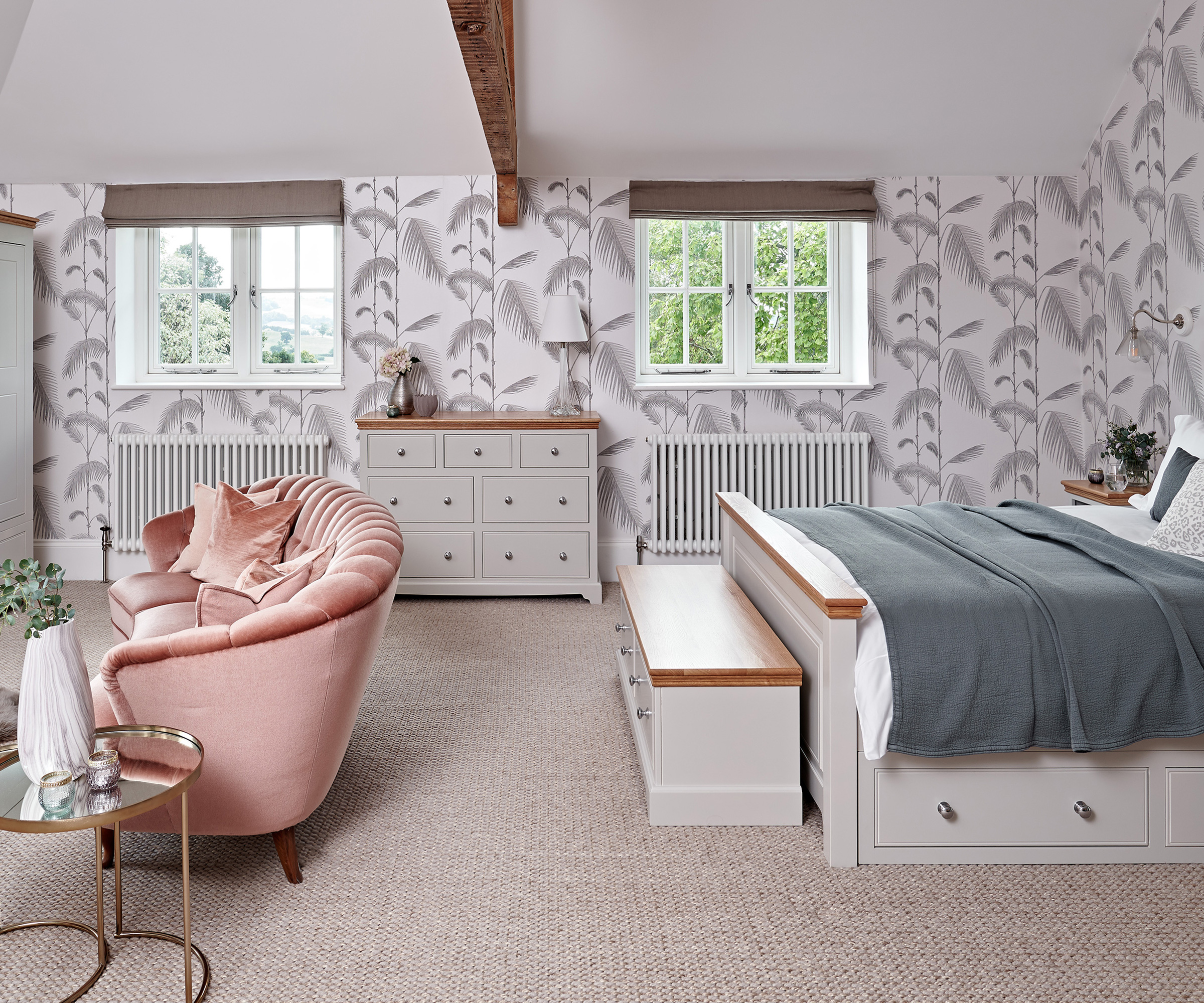
Paint isn't your only option when creating a neutral colour scheme – wallpaper can work wonderfully too and is a great way to add a little interest and pattern to the space. If you fancy trying your hand at your own decoration, make sure you familiarise yourself with how to wallpaper first.
In this bedroom, a grey and white wallpaper has been paired with a beige carpet and a selection of off-white wooden furniture from The Painted Furniture Company. The luxurious pink velvet sofa is the ideal match for the greys and creams elsewhere in the room.
10. Connect with nature using natural tactile materials
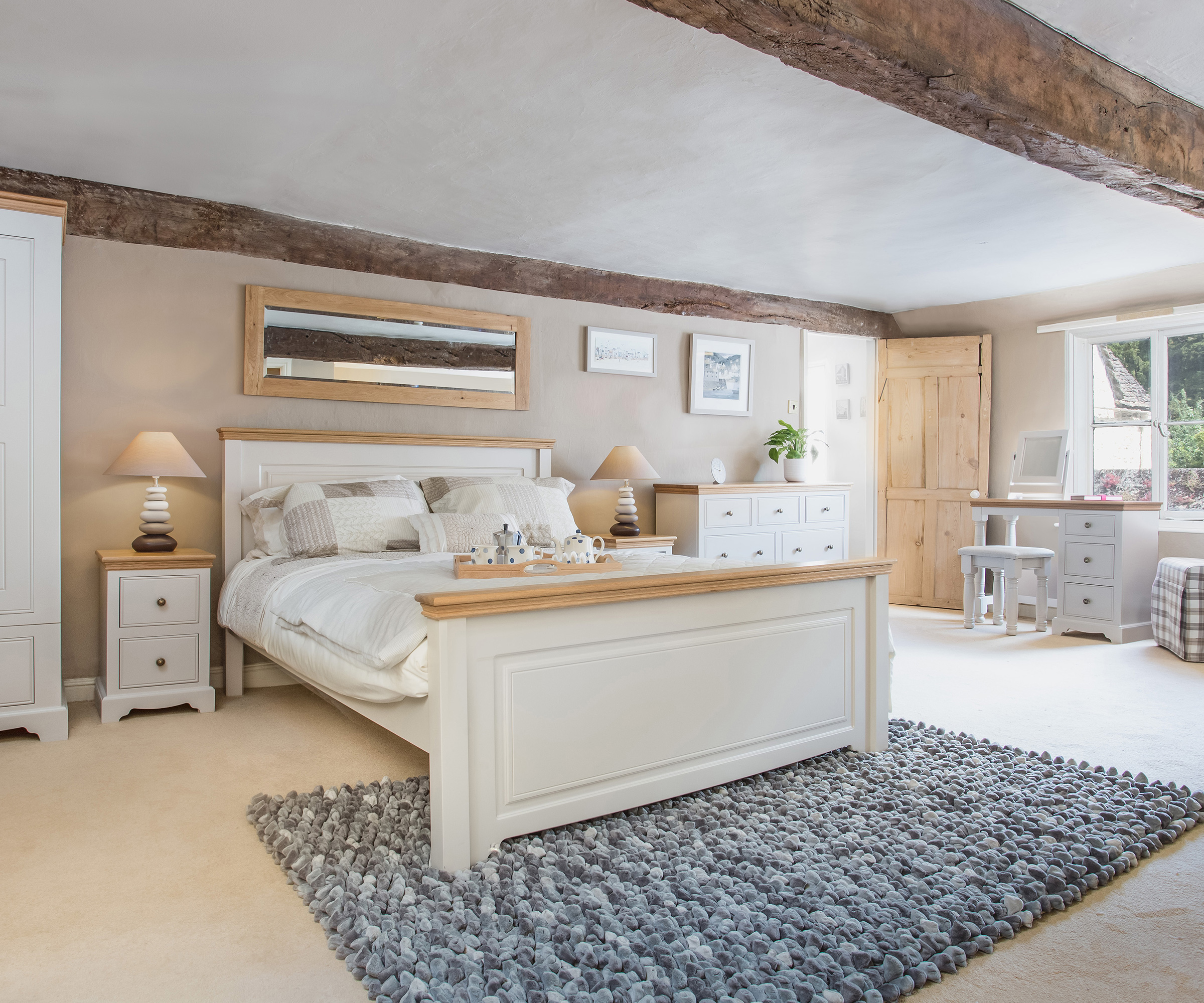
The bedroom is the perfect place to use lots of natural materials as doing so will help create a restful and relaxed look. Think along the lines of natural flooring, wooden furniture and more rustic wall finishes.
This bedroom, which has been kitted out with furniture from The Painted Furniture Company, features exposed timber beams and a soft, matt taupe shade on the walls.
FAQs
How can I ensure a neutral scheme does't look boring?
If you are worried about a neutral colour scheme lacking in interest, fear not, there are plenty of ways to avoid this.
"To ensure neutrals don’t feel too safe, layer different shades of neutrals and introduce small touches of accent colours," suggests Chelsea Clark, head of brand at I Love Wallpaper. "Add in textures such as linen, velvet and faux fur, and experiment with patterns or natural materials to add depth and interest. Your lighting design can also play a huge part in determining the mood and ambiance of a bedroom. Soft diffused light can help create a serene atmosphere, casting gentle shadows around the room."
Should I use low VOC paint in the bedroom?
Using a natural paint in the bedroom – and particularly in children's bedrooms – can be a brilliant idea. VOCs (Volatile Organic Compounds) are chemical compounds which can be found in many manmade products and can cause nausea, headaches and dizziness amongst other things. For this reason it is wise to seek out low-VOC paints.
Bear in mind that natural or eco paints can be a little less hardwearing than standard paints but in bedrooms this is often not so much of a problem as in high traffic areas such as kitchens and hallways.
Although your bedroom colour scheme will play a huge role in how the room looks and feels, there is more to the design of this space than colour alone.
Key design factors that will determine how the bedroom feels include its layout, your furniture choices, the lighting scheme you incorporate, the flooring and even the ensuite bathroom ideas you opt for. In short, you need to take a whole-room approach to ensure this is a space that works well for you.
Natasha was Homebuilding & Renovating’s Associate Content Editor and was a member of the Homebuilding team for over two decades. In her role on Homebuilding & Renovating she imparted her knowledge on a wide range of renovation topics, from window condensation to renovating bathrooms, to removing walls and adding an extension. She continues to write for Homebuilding on these topics, and more. An experienced journalist and renovation expert, she also writes for a number of other homes titles, including Homes & Gardens and Ideal Homes. Over the years Natasha has renovated and carried out a side extension to a Victorian terrace. She is currently living in the rural Edwardian cottage she renovated and extended on a largely DIY basis, living on site for the duration of the project.

